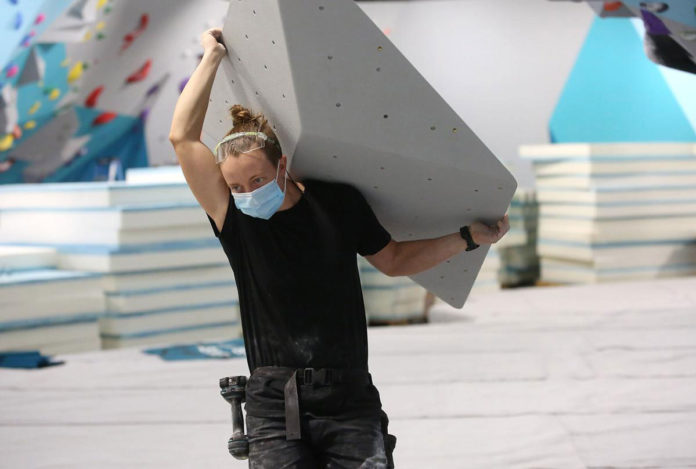This story is the fourth chapter of a five-chapter series on Professional Routesetting: The Truth Behind the Trade by Dave Wetmore. Scroll to the end of the article for bios of routesetters interviewed.
Read More Chapters of Truth Behind the Trade
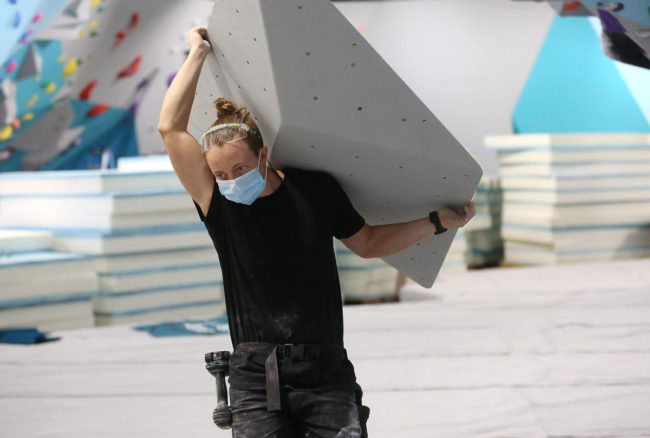
After finishing our setting work one week, a friend and I sat down at the bar for our usual post-session beer.
“Honestly man, what do you think of routesetting?” I asked.
“It’s the coolest job I’ve ever had,” he responded. “But it definitely isn’t sustainable career wise.”
Once you’ve “made it” as a routesetting titan―a self-described reticent hero with a chromed-out drill towering over the masses of plastic-slinging plebs―is it possible to maintain your position high up on that horse? There are only so many times that you can strip the same walls with the same holds using the same volumes with the same crew before your mind starts to crack―or your back. Soon, the very reason you started setting in the first place―for the love of climbing (at least for me)―could vanish.
So how does a genuinely engaged routesetter avoid the inevitability of burnout?
Manual Labor Is Hard
“Most days I think, damn, I have the best job in the world. This is amazing. But having a day or short period of time where you’re bored or uncreative is inevitable no matter what the job is. That’s life. Don’t quit over that! Accept that a dip is inevitable and be patient for it to pass. Burnout, in my opinion, is a choice. If setting five days a week or trying to be perfect every day is exhausting, then something needs to change,” sums up Molly Beard.
Circling the drain as an aging routesetter is similar to the plight of the professional athlete. The forever pro setter, just like the forever pro climber, is a myth. You can’t just set forever much in the same way that a professional climber can’t just climb forever.
Over time―especially when the layers of challenges in your routesetting environment start piling up―one’s energy for the craft can wane. You can become burned out, used up like a battery so depleted that it can’t be recharged.
“Nobody talks about this stuff, man. For people just getting started, it’s all roses. But that’s just not the case. I’m a realist. This is the way our industry works and routesetting is really hard. It’s not easy,” says Brad Weaver.
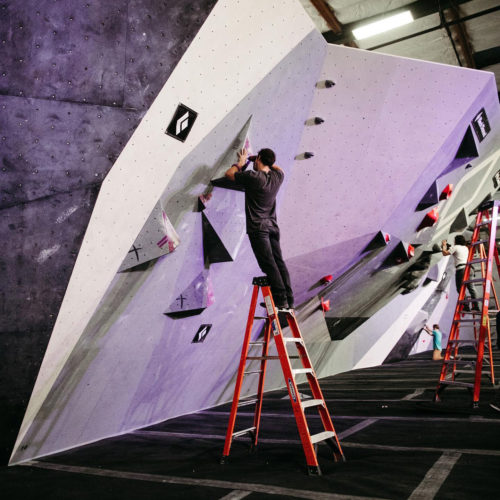
When I moved to Sacramento to be the Head Setter at The Boulder Field, I felt like I had landed the best setting gig that I could have imagined. And for a while, it really was. But after a certain amount of time, all the original cruxes I faced in the beginning of my career resurfaced.
Strip a wall. Be wary of metal shards, chalk, skin, plastic and boot rubber falling into your eyes. Try not to suck too much of it into your lungs. Now fix those pesky spinners and be careful not to strain your back lifting the ladder or hauling another bin of holds or removing that last awkward volume.
“You’re moving like you’re 25 again!” someone yells out while I’m climbing, or maybe I’m just hearing things. It’s a simple joke that nonetheless reminds me of the job’s ticking clock. I ignore the crunching sound in my knees, neck and shoulders.
“People have been saying the setting is a bit stiff. Maybe lighten this round up a bit. And let’s try to make the easier climbs a bit more interesting,” I replay in my mind.
The words rattle around my skull over the clack-clack-clack of impact drivers, variations of one conversation slightly tweaked from another, all adding up to the same sum: never quite right.
Now be creative, but not too creative. Set some new moves. Set some old moves. Accommodate the young freshlings, the green novices, and the aged veterans of a faded generation. Forerun. Be quick and timely. Tomorrow, repeat the process from top to bottom. Do it again. And again. And again, until you lose count of all the years spent inside staring listlessly at blank walls. Taking the puzzle apart and then putting it back together again in a slightly different way for the thousandth time can sometimes feel unusually heavy.
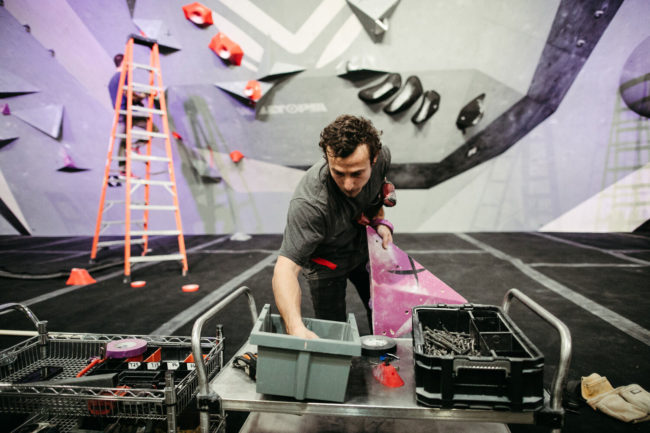
While setters don’t have to manage the weight of commitment and consequence in the same way that a gym owner does on a daily basis, setters do have to wrestle with the unforgiving quirks of the job that accumulate over time.
What the reality of manual labor―albeit fun and engaging―will inevitably do to your body over the long haul (and I’m not even setting ropes anymore, I’m spoiled) just doesn’t usually line up with the current idyllic vision of a routesetting career.
“I think people coming into routesetting now have this idea of what routesetting is. They’re coming into this very comfortable, accommodating environment and it’s not as hard for them, but they’re still burning out. At the root of it all, it’s that routesetting is hard. It is not this easy, fun, artistic thing all the time. There is hustle. There is grind. There is sacrifice. It’s mentally taxing and challenging. And it’s not this Instagram model of what routesetting is. Not only in the day-to-day of trying to figure out how to force certain sequences but trying to do it consistently and for a long duration is really challenging, and then dealing with the feedback is another thing,” adds Weaver.
While I am grateful to be afforded the opportunity to make money with such a creative pursuit, the fact is that for most setters it’s just not sustainable long term unless you scale back: modify your schedule (work less despite the loss in income); diversify your future in the climbing gym industry by replacing some of your setting work with management, ownership or coaching responsibilities (all of which usually amount to five days or more in the gym); or do something entirely different on the side (hence this writing).
“Five days a week of setting is too much. You get burned out. Not only does your mind start to slow down, but your body is just fried. You can’t climb for fun. You’re exhausted. Injuries never have a chance to heal. Setters should get a full-time salary on three days a week of work, but I’m not sure how we get there,” Jackie Hueftle says.
I suppose if I mentioned that idea to a guy crushing rocks at the gravel factory or a woman working mass transit in Boston for a living for three decades, they would laugh at me and my neo-liberal, utopian “poor me” ideals straight out the MassPike back to California. Just because the job ain’t “easy” doesn’t mean setters deserve some special treatment outside of a livable wage and benefits. Some would even go as far to say that routesetters really just aren’t that special. Whether or not you value the dedication of a long-term professional routesetter, I would argue the question still remains, for routesetters and all manual laborers: How does the aging setter pave their way forward given their taxing work?
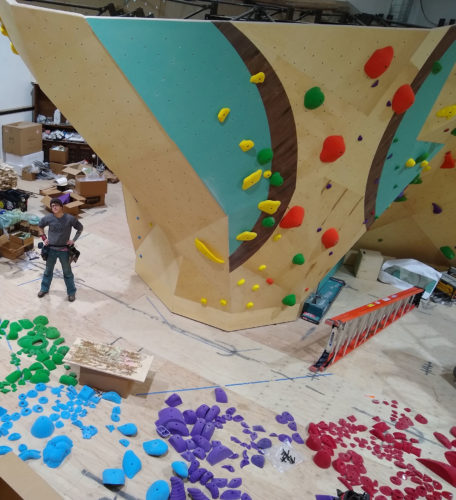
Give Yourself Permission to Change
“You start to notice yourself finding a way to set more out of necessity than because you genuinely want to be doing what you’re doing. But it is what it is. If setting was fun all the time, it wouldn’t be called work,” reflects Sydney McNair, a Head Setter in the industry.
“Look at guys that are in the construction trade. If there’s an old cat still doing construction, they’re either Wolverine or they’re just really smart about what they do,” says Beard.
“As you get older, you just can’t set and climb as much. You have to find ways to work around that. New setters coming up can’t even fathom not climbing or setting. It’s unbelievable to them. And when they look at me, they think, “Oh, he works in the gym. And he doesn’t climb much. Do I even respect him?” They have a weird concept of what it means to grow old as a veteran climber,” points out Helt.
Just like anything else in life, changes in motivation and perspective evolve just as surely as the sun rises. In fact, Helt―who finds his primary source of motivation in mentoring his crew―eventually stopped climbing outside and, just like any other long-time setter, grew bored.
Years ago, while setting at a Vail Bouldering World Cup, he told me, “Oh, that’s the same boulder as last season as the last comp as what I saw on Instagram last year. I don’t really dig this anymore.”
More than just feeling the effects of movement repetition and regurgitation, one’s identity can become ensnared in their career, which makes transitioning as a setter even more complicated.
“Who am I if I’m not a climber?” says Helt. “Who am I if setting isn’t everything?”
“This year, I was really close to just being like, maybe this isn’t what I want to do anymore,” shares McNair. “Burnout definitely happens. It’s an inevitable thing. For me, I try really hard not to be, but I’m most definitely a perfectionist. And it’s mentally hard on me to know that I’m not giving my best when I’m just too tired to perform.”
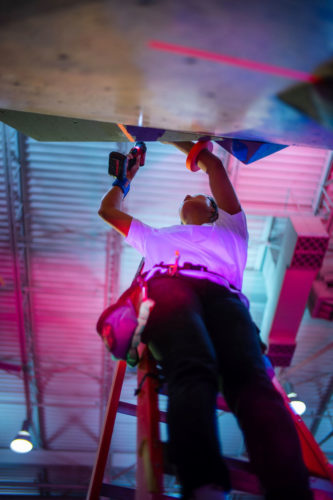
This is why Helt says, “Let go. It doesn’t have to be this all-encompassing thing.” He says that separating his professional life from his personal life has been beneficial. Climbing and setting doesn’t have to be everything in life.
“I’m laughing every day now that I’ve changed my perspective a little bit. I’m not training for a comp. I’m not training for anything. I’m not trying to project. I’m just going to go forerun because forerunning is super fun when there’s not a lot of pressure involved,” says Helt.
Ultimately, the nature of one’s creative passion will change, and we have to give ourselves permission to as well.
“If you’re gonna do this for a long time, the passion is going to wane at some point. It’s going to lessen. It’s going to change, and you have to be okay with that or find another direction for that passion to go. Because in our world, passion is everything. You have to be passionate as a climber. It has to eat at your soul. And especially the setters, they’re so passionate. And when somebody loses that passion, it’s like a moral failing,” expands Helt.
Mountain explained to me that it’s okay if the original fire for your job isn’t there, and I agree. You can still get paid for being good at what you do without wearing a badge of honor that proves your level of enthusiasm. You can set and still do other things. It doesn’t have to be this abominable force in your life that blocks the passion for anything else new to come.
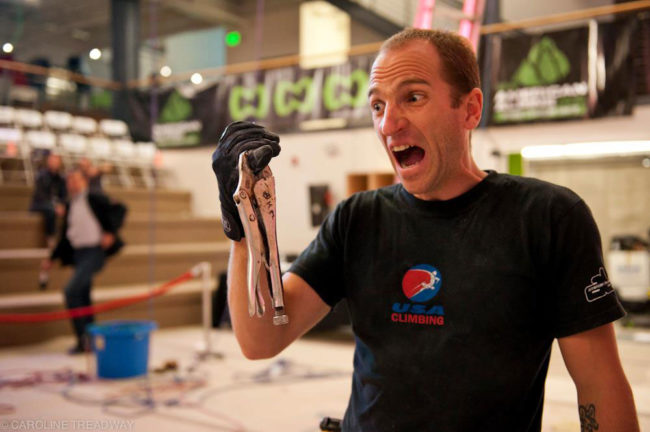
“I talk to a lot of setters. I love the craft and I want to be encouraging, not discouraging. But sometimes the answer really is: Stop. Go do something else. You are too motivated and too smart to only be routesetting,” says Chris Danielson.
For people to be successful in routesetting over the long term, finding and exploring other avenues of business and vocation can be integral to managing a life in the climbing industry.
Philosophically speaking, I don’t think routesetting was ever “meant” to be a full-time job. Take a musician or a writer or a painter. They don’t go to work, punch the clock, produce something and bounce. It’s not intrinsically a 9-to-5 life. Cramping this type of work into a conventional structure can sometimes feel like trying to force a square peg into a round hole. But I believe everyone deserves a living wage and quality work, so making that happen is still a goal worth striving for, and strive we do.
The ultimate dichotomy in all of this is that I spent my 20’s grinding in the gym and at comps and clinics with the hopes of getting to exactly where I am today, only to realize that I wasn’t going to be able to sustain another decade of the same model without a change.
In the next essay, we’ll dive into some alternatives and what I believe make up some of the foundations to a healthier, long-term relationship with routesetting. A shift towards more freedom and flexibility for each setter to decide may be the key to unlocking a higher setter retention rate.
About the Setters
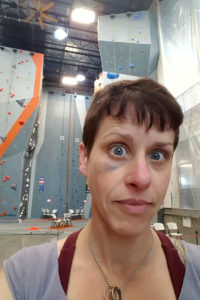 Molly Beard
Molly Beard
Molly started climbing in 1993 and began routesetting in 1995 after getting involved with a youth climbing team. She became the first U.S. woman to earn L5, chiefing three Youth Nationals in 2008-2009. She loves Mexican cuisine, BJJ, Hello Kitty, and chainsaws almost as much as her impact driver.
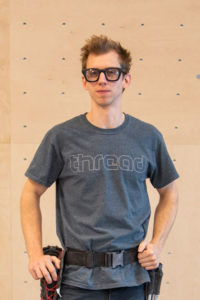 Brad Weaver
Brad Weaver
Brad is a Level 5 USAC National Chief Routesetter and IFSC Junior Routesetter who previously developed and managed the routesetting program for the Stone Summit chain of gyms in the Atlanta area until 2019. Brad has worked at each USAC National Championship competition in the past decade―adult and youth, bouldering and lead―and has set numerous international competition events and youth competition training camps. He now works with his colleague Chris Danielson at Thread Climbing.
 Jackie Hueftle
Jackie Hueftle
Jackie Hueftle has been routesetting since 1998 and has been a USAC Level 4 setter since 2008. As a young competitor she represented Team USA at Junior Worlds and since then has coached for and set numerous competitions of all levels, including three years as chief of Womxn Up and several years as Head Setter at The Spot in Boulder. She is the owner of Kilter Grips, co-founder of The Routesetting Institute, a member of the CWA Routesetting Committee, and part of an International effort to professionalize routesetting.
 Sydney McNair
Sydney McNair
Sydney McNair started routesetting in 2004 in Seattle, WA. She moved to NH for college and took a Head Setter position at NH Climbing & Fitness, formerly EVO Rock+Fitness, post-graduation and has been there since late 2012. Sydney has set for several USAC Championship level events and independent competition series, and what she appreciates most from those experiences are the learning opportunities that come from working with so many different routesetters. What she enjoys most about routesetting is creating climbs that teach climbers of all sizes, types and abilities something new.
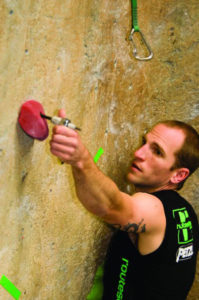 Mountain Helt
Mountain Helt
Mountain Helt (formerly Mike Helt) has been a pro-setter since 1995. He founded the influential website, Routesetter.com, as well as Climbing Business Journal. Mountain helped create the current USAC setter certification system and was a lead instructor for over ten years. He is a USAC Level 5 National Chief and since 2007 has set numerous IFSC World Cups and National championships. He currently lives in Reno where he is the co-founder of Mesa Rim Reno and serves as its Head Setter.
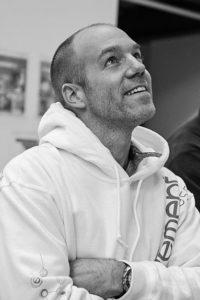 Chris Danielson
Chris Danielson
Chris has been climbing and setting since the early 90s and has worked at the highest level of competitions for nearly 20 years, most recently as the Chief Routesetter of the 2021 Moscow IFSC Bouldering World Championships. He is the owner of Thread Climbing, a leading climbing holds distribution company based in Boulder, Colorado, and has experience in many aspects of the industry, including federation work, gym start-up and design consultation, athlete training, and commercial setting and education.
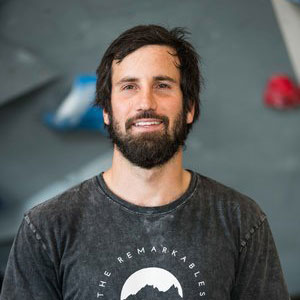
In the early 2000’s, Dave started screwing things to the walls inside of his shed. Two decades later, he is still doing the same thing, only on slightly nicer walls with more advanced materials. After studying journalism at the University of New Hampshire, he unwittingly fell into the then emerging trade of routesetting. These days, he fancies himself a writer and hopes that his stories might help others shift their perspective or share a laugh, or both. Dave is currently the head setter of The Boulder Field in Sacramento, California, and has been published in Climbing, Rock and Ice, Experience, and Urban Climber, among others.




